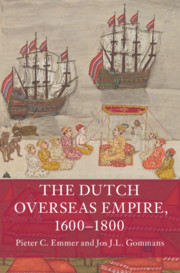Book contents
- The Dutch Overseas Empire, 1600–1800
- Additional material
- The Dutch Overseas Empire, 1600–1800
- Copyright page
- Contents
- Figures
- Cover Image
- Maps
- Note on Terminology
- Preface
- Frontispiece
- Introduction
- Part I The Grumbling Hive
- Introduction
- 1 The Eighth Province
- 2 The Empire at Home
- 3 Dialogue
- Conclusion
- Part II The Atlantic World
- Part III Monsoon Asia
- Coda
- References
- Index
Conclusion
from Part I - The Grumbling Hive
Published online by Cambridge University Press: 29 September 2020
- The Dutch Overseas Empire, 1600–1800
- Additional material
- The Dutch Overseas Empire, 1600–1800
- Copyright page
- Contents
- Figures
- Cover Image
- Maps
- Note on Terminology
- Preface
- Frontispiece
- Introduction
- Part I The Grumbling Hive
- Introduction
- 1 The Eighth Province
- 2 The Empire at Home
- 3 Dialogue
- Conclusion
- Part II The Atlantic World
- Part III Monsoon Asia
- Coda
- References
- Index
Summary
Contemplating the overall impact of the overseas activities on the Dutch Republic, we can conclude that the direct effects of overseas trade with America, Africa and Asia were much more limited than is generally assumed. Having said that, it is also true that the Netherlands experienced the very far-reaching social effects of an almost worldwide changing pattern of consumption. The consumption of tobacco, tea and coffee played an important role as early as the seventeenth century, but in the eighteenth century their usage became more widespread, which had sweeping repercussions for the rhythm of daily life for the wealthy bourgeoisie. The bulk import of Indian textiles and Chinese porcelain brought about a similar drastic change in patterns of consumption in the eighteenth century. Both caused real manias and stimulated the production of cheaper, home-made alternatives in the form of ‘typically Dutch’ Delft blue and printed chintzes. Although these products were introduced in the seventeenth century, the enormous influence of potato and corn, two originally South American crops, is mainly a story of the nineteenth century.
- Type
- Chapter
- Information
- The Dutch Overseas Empire, 1600–1800 , pp. 120 - 124Publisher: Cambridge University PressPrint publication year: 2020



